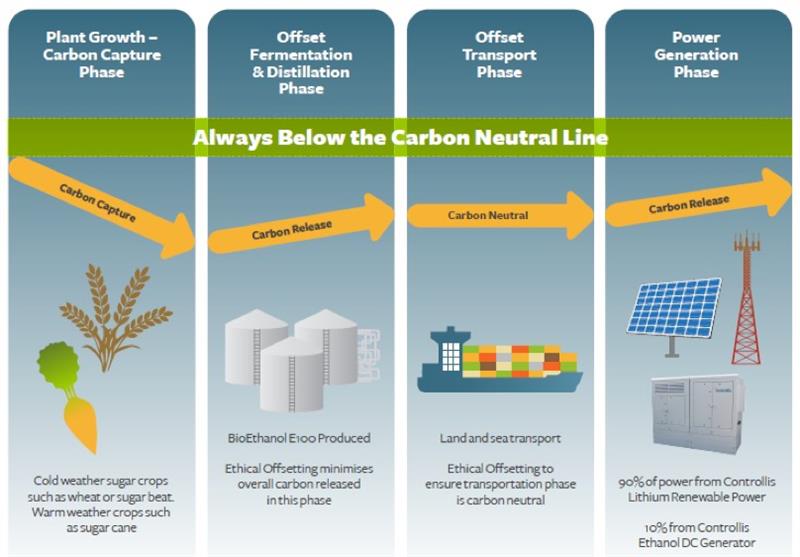The new system, called Controllis Zero, is based on the company’s Modular48 DC power system. That system reduces carbon emissions using solar power and rechargeable lithium ion batteries. Controllis Zero takes that further by adapting the DC generator technology to run on E100 bioethanol instead of diesel.
The company says this is accomplished without compromising network uptime, so MNOs and tower companies can replace their dependency on fossil fuels. Controllis adds that switching to its Controllis Zero proposition can help large telecommunications companies meet their legal, shareholder and green obligations.
“With global warming increasing and net zero targets looming, companies are under increasing pressure to operate in a more sustainable way,” commented Simon Albury, managing director of Controllis. “Controllis Zero has been developed with efficiency initiatives such as Ofgem’s ECO in mind and any CO2 released during energy production is offset by a carbon-neutral biofuel manufacturing process.”
The company explains the Controllis Zero biofuel lifecycle as follows:
- The manufacture of E100 bioethanol during the plant growth stage is carbon negative because CO2 is converted into oxygen by photosynthesis
- CO2 emissions during bioethanol fermentation and distillation are counterbalanced by ethical offset programs supported by the United Nations
- E100 bioethanol is shipped to different locations using the greenest modes of land and sea transport. The emissions for the transport phase are also offset.
- Controllis’ hybrid solar lithium ion solution is the principal power source up to 90 per cent of the time. The remaining 10 per cent is produced by Controllis’ bioethanol-powered generator

Controllis Zero also includes remote monitoring and analytical tools, giving onsite and offsite maintenance teams actionable insights into all aspects of the system’s power output and performance levels in real time. It will be commercially available from Q1 2020.



